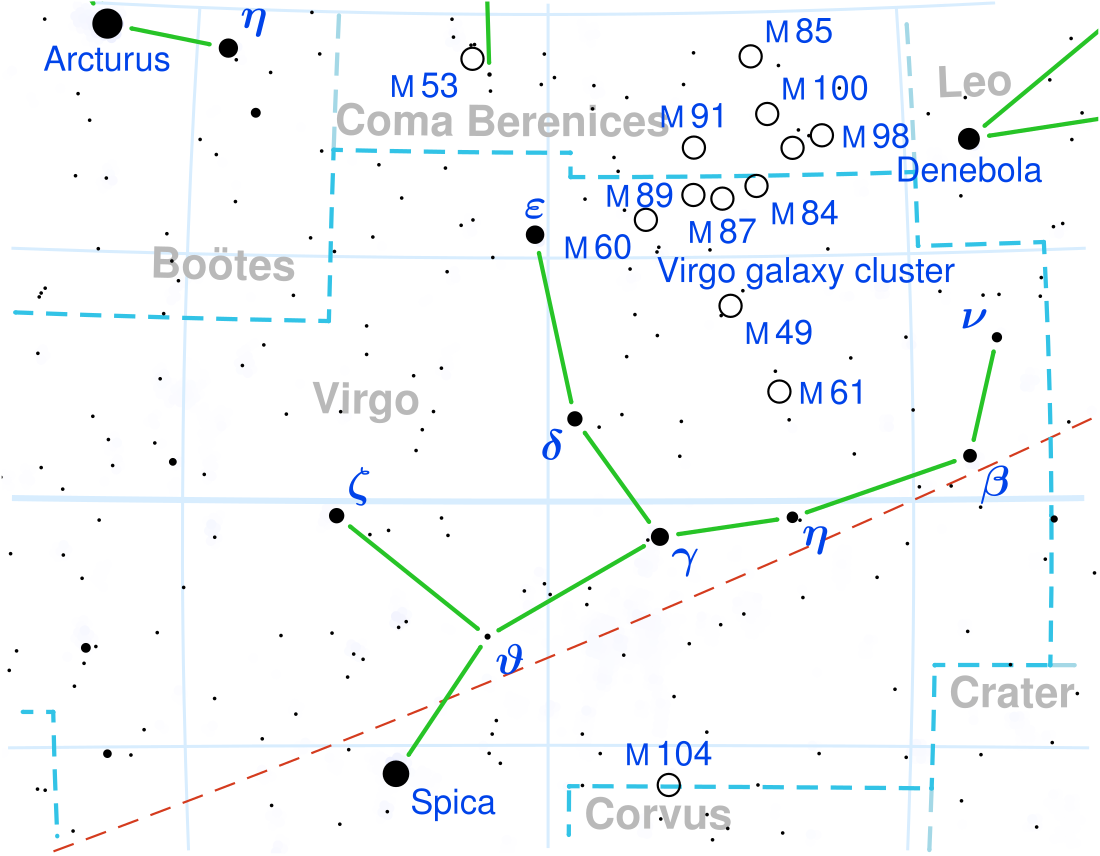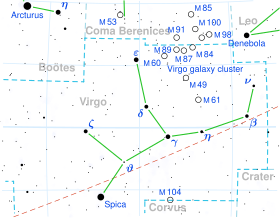Top Qs
Timeline
Chat
Perspective
Omicron Virginis
Star in the constellation Virgo From Wikipedia, the free encyclopedia
Remove ads
Omicron Virginis (ο Vir, ο Virginis) is a binary star in the zodiac constellation of Virgo. It is visible to the naked eye with an apparent visual magnitude of +4.12.[7] Based upon parallax measurements, it is at a distance of 163 light years.
Remove ads
Characteristics
The components are orbiting around the system's center of mass at a period of 50.7 years, and a nearly circular orbit with eccentricity 0.12 and an average separation of 21 astronomical units.[8]
The primary star is a G-type giant with a stellar classification of G8 IIIa CN-1Ba1CH1.[4] This indicates that it is a Barium star. It is around 11 times larger than the Sun.[9] Although it is slightly cooler, it is radiating about 57 times the luminosity of the Sun. It is over twice as massive as the Sun and is around a billion years old.[5] A simplified statistical analysis suggests that ο Virginis is likely to be a red-giant branch star fusing hydrogen in a shell around an inert helium core, but there is about a 22% chance that it is a horizontal branch star fusing helium in its core.[10]
The secondary is a white dwarf with 94% of the Sun's mass. It contamined the surface of the giant primary with s-process elements when it was on the asymptotic giant branch, causing it to be a Barium star.[8] It may also explain the unexpected SiIV emission flux coming from Omicron Virginis.[11]
Remove ads
References
Wikiwand - on
Seamless Wikipedia browsing. On steroids.
Remove ads

